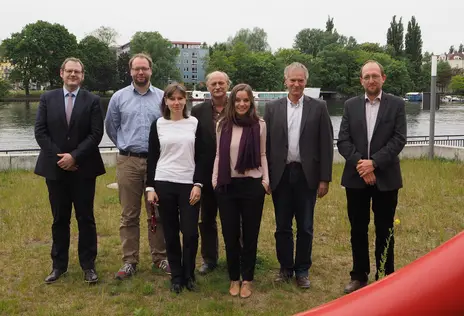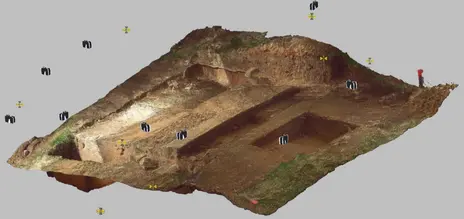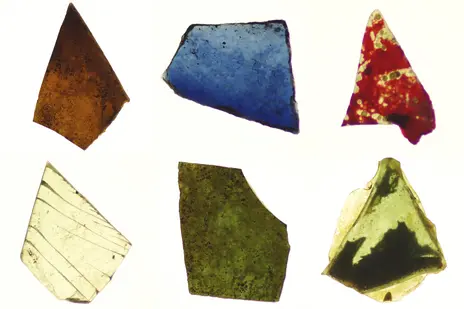The exemplary recovery, conservation and restoration of environmentally damaged archaeological finds using the example of medieval glass and glassworks in the Weserbergland region (Lower Saxony and North Rhine-Westphalia)
Short description
The content of the project funded by The German Federal Environmental Foundation (Deutsche Bundesstiftung Umwelt DBU) is the exemplary recovery; securing and conservation of anthropogenically environmentally damaged archaeological glass, especially wood ash glass of the Middle Ages (in older literature: "forest glass").
The conservation problem is due to the high flux content of artifacts made from wood ash. The potassium-containing material is an invention of the Carolingian period, born out of necessity, which helped shape the buildings of the Middle Ages. Unfortunately, the glass is sensitive to moisture and anthropogenically induced pollutants, which in the case of soil finds were introduced by storage and extensive cultivation. The heavy use of the land as a production factor with the decades-long input of salts and fertilizers as well as the climate-induced acidic pH values of the soils thus play a significant role in endangering the fragile objects. As a result, these glasses are in a highly corroded, fragile state of preservation, leading to more difficult salvage conditions and accelerated corrosion. In order to salvage and preserve wood ash glass, a prudent salvage routine is therefore required, as well as securing and preservation measures specifically targeted to the damage load. The foundations for the initial securing of finds are to be laid in this model project.



Project leader University of Bamberg
Project member University of Bamberg
Sören Siebe M.A.
Overall project management
Prof. Dr. habil. Hans-Georg Stephan
Martin-Luther-Universität-Halle-Wittenberg
Project duration
17.09.2014 to 16.09.2016
Cooperation partner
Funding program
Funding topic 9.1 Preservation of cultural assets under environmental aspects
